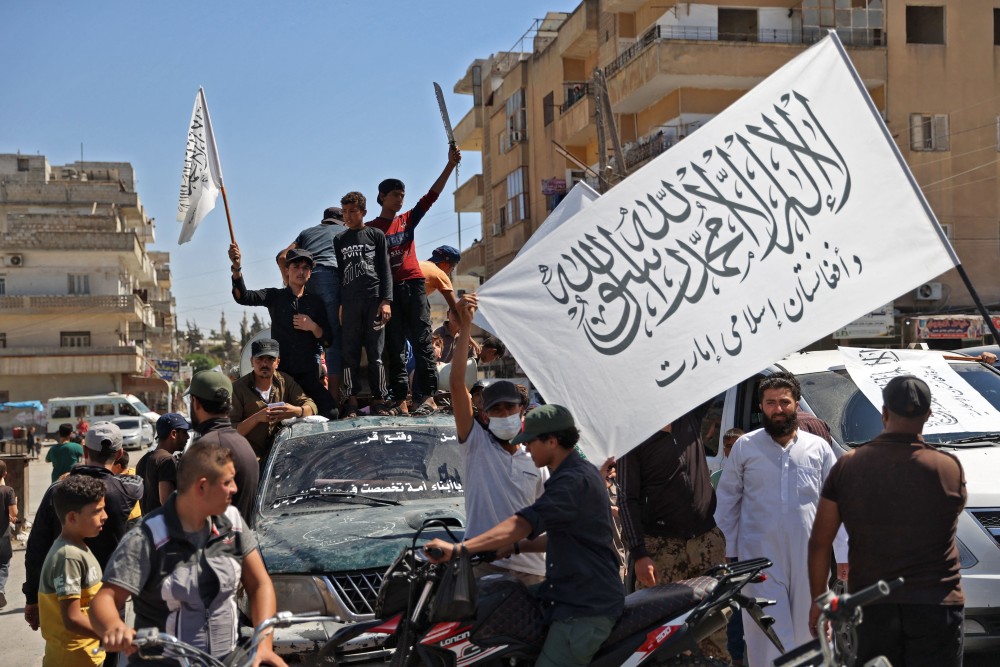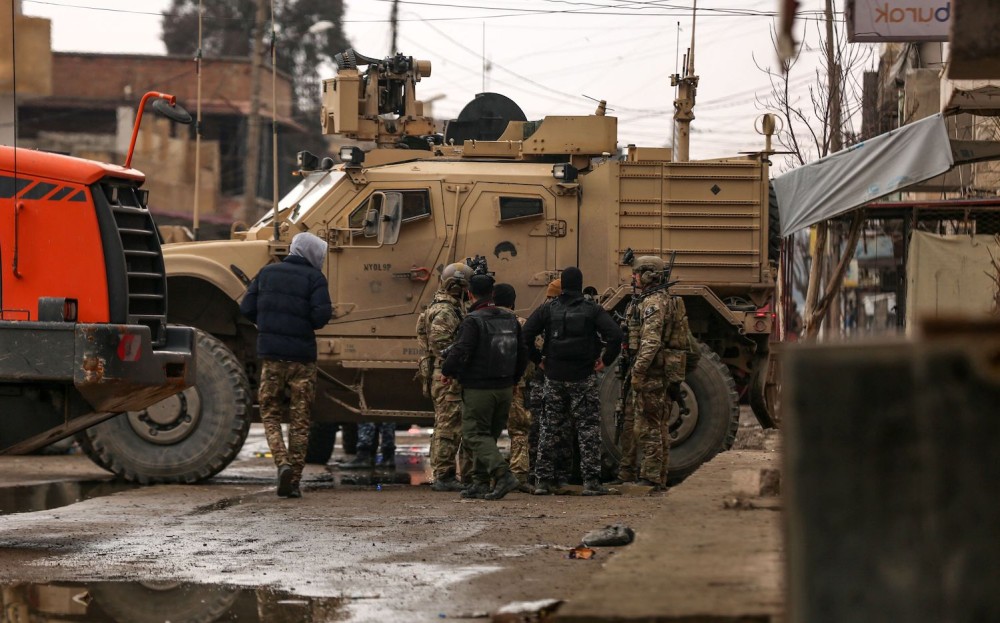•The question of who controls the region around Idlib has become an international problem.
By Anchal Vohra
In early February, two dozen American Delta Force commandos descended on a town in northwest Syria near the Turkish border to apprehend the Islamic State’s chief, Abu Ibrahim al-Hashimi al-Qurayshi. He blew himself up, just like his predecessor Abu Bakr al-Baghdadi had in 2019 in a nearby area during a similar operation by U.S. special operations forces. Both jihadi leaders sought shelter in the northern province of Idlib controlled by Hayat Tahrir al-Sham (HTS)—a former al Qaeda affiliate that claims to have reformed into an Islamist nationalist force.
Since 2015, the United States has killed scores of al Qaeda and Islamic leaders inside Idlib, often in drone strikes. The presence of high-profile Islamic State and al Qaeda leaders in the last rebel-held Syrian enclave has confirmed that Idlib has become the hideout of choice for remnants of all sorts of Syrian jihadi groups.
Al Qaeda’s leader Osama bin Laden was found hidden in Abbottabad, Pakistan, in 2011. Back then, the South Asian country was widely believed to be a sanctuary of al Qaeda and Taliban fighters, most of whom had been trained in madrassas inside the country. Now Idlib seems to have replaced Pakistan as a favored sanctuary of terrorists. And this raises the question of what—if anything—should be done about it.
The United States could continue to back the status quo in northern Syria—namely, Turkey’s broader control over the region coupled with America’s own freedom to carry out counterterrorism raids and airstrikes. Alternatively, Washington could develop a strategy for a new regional arrangement, together with Russia, that again brings Idlib under the control of the Syrian government. The presence of a large number of jihadis in this territory could conceivably tip U.S. calculations toward the latter solution—and against the dominant rebels in the region.
The rebel group in question, HTS, claims to be cracking down on both al Qaeda and Islamic State cells, and it is possible that both Baghdadi and Qurayshi slipped through the gaps and found refuge in Idlib without the group’s knowledge. Some analysts suggest HTS can be the United States’ ally against the Islamic State. But others are more skeptical of the group, suggesting it was highly unlikely that the rebels were unaware of the location of the Islamic State leader. He was reportedly living near an HTS checkpoint and a Turkish military outpost.
There is also a strong belief that HTS’s rank and file support extremists. The group’s reputation has been further tarnished by accusations of routinely targeting pro-democracy rebels and often abducting and torturing activists, jurists, and journalists who speak against it.
HTS claims to have broken ties with al Qaeda and presents itself as a legitimate governing body of nearly 3 million Syrians in an attempt to show it is capable of being an alternative to Bashar al-Assad’s regime. The Salvation Government associated with the group oversees provision of education, health care, and other services. HTS has remodeled itself on the lines of the Taliban as a nationalist Islamist anti-regime force and is desperate to be accepted by the international community.
James Jeffrey, a special envoy for Syria under former U.S. President Donald Trump, saw HTS as an asset to pressure Assad and even opened back channels with the group through intermediaries in nongovernmental organizations and among journalists. Jeffrey told PBS in an interview last year that while the group would remain listed as a terrorist organization, it was not on the United States’ target list. “The United States is focused on our policy in Syria, which is mainly to put pressure on the Assad regime. So go draw your own conclusions,” he said.
The administration of Trump’s successor Joe Biden, however, acknowledges that some of the United States’ earlier goals—including replacing Assad with democratic rebels—are now entirely unrealistic. But Biden’s policy on HTS isn’t yet clear. Will the U.S. government reach out to a purportedly locally facing jihadi outfit and partner with it against global jihadis? Or will it see the group as a part of the problem? “I don’t think there is widespread support in the United States for engaging with HTS,” Aaron Stein, director of research at the Foreign Policy Research Institute, told Foreign Policy. “I think the general assessment is HTS is made up of jihadists that have American blood on their hands,” he added.

Syria Is Neither Stable Nor Safe
Experts believe recent events are more likely to crush the group’s hopes of any reprieve. Daniel Milton, director of research at the Combating Terrorism Center at the U.S. Military Academy, said the fact that two of the Islamic State’s leaders had been hiding out in Idlib “ought to cause us to reassess how we are thinking about the relationships between these [HTS, al Qaeda, and Islamic State] groups.” Joshua Landis, the head of the Center for Middle East Studies at the University of Oklahoma, said under the Trump administration the United States thought HTS increased U.S. leverage on Assad and denied him territory, but he added “That perception may change now that the second Caliph of ISIS has been cornered and killed in Idlib province.”
The recognition HTS craves seems to have been delayed, perhaps indefinitely, as the northwest of Syria turns into a sanctuary for al Qaeda fighters and the Islamic State. But the Biden administration has no vision so far on how to bring Assad to agree to decentralized power structure in the northwest and seek an end to the decades-long conflict.
In the northwest, the U.S. policy has been to facilitate provision of humanitarian aid to 3 million internally displaced Syrians through the United Nations Security Council while letting Turkey manage all sorts of rebel groups. “The United States has sought to negotiate quid-pro-quo deals with Russia to avoid UN vetoes over humanitarian aid, while backing Turkey’s status quo-oriented policy in the hope of improving Ankara’s leverage in its talks with Moscow, on both humanitarian and military matters,” said Aron Lund, a fellow at the Century Foundation and a researcher at the Swedish Defense Research Agency. “But it’s an awkward situation, since U.S. and Turkish policies are diametrically opposed elsewhere in Syria,” he added.
Turkey coordinates and cooperates with HTS, which is in a position to control territory Turkey sees as an essential foothold to keep an eye on and challenge the Kurdish forces. But Turkey is not chasing either al Qaeda or the Islamic State. A Syrian rebel with the moderate Free Syrian Army told FP that there is no solution to Idlib but to eliminate all sorts of Islamists. “Soon all these Islamists will be fought, because there is no solution in Syria with their presence. It’s just a matter of time,” he said on the condition of anonymity. That would be a perfect scenario for the United States, but no one believes the moderate rebels can defeat HTS’s disciplined cadre.
Saleh Moslem, a politician from the Kurdish faction dominant in eastern Syria, the Democratic Union Party, spoke to Foreign Policy and said that according to the Syrian Democratic Forces, America’s allies in the war against the Islamic State, most of the hundreds of fighters from the group who recently attacked a prison in Hasakah crossed over from HTS-controlled northwest to free their colleagues. “HTS are remains of ISIS,” Moslem alleged. These Kurdish forces and Turkey—both U.S. allies—are archenemies. The Kurdish troops, however, have paid in blood in the war against the Islamic State, whose remnants are now reconstituting in Idlib. “HTS should be dismantled,” said Moslem. “The U.S. forces should target HTS too.”
If the United States is not yet certain what its priorities in northern Syria are, that is no accident. The United States never had an end goal in mind for Syria, possibly because it was never interested, but also because it’s unclear how anyone should navigate the labyrinth of stubborn actors involved. Clearly, it’s not a solution for U.S. troops to stay in Syria forever to provide a buffer to their Kurdish allies or to manhunt jihadis hiding in Idlib. But the United States could diplomatically engage the Turks and the Russians in the hope of persuading their respective allies to moderate their expectations and to find a long-term resolution for the remaining holdout regions.
For now, that seems too tall an order for the Biden administration, which has instead further narrowed its focus toward the short-term goals it regards as achievable. For now, Washington’s presence in northern Syria will remain focused on humanitarian support, counterterrorism surveillance, and airstrikes against al Qaeda and the Islamic State.
Anchal Vohra is a columnist for Foreign Policy and a freelance TV correspondent and commentator on the Middle East based in Beirut. Twitter: @anchalvohra
Credit | Foreign Policy

